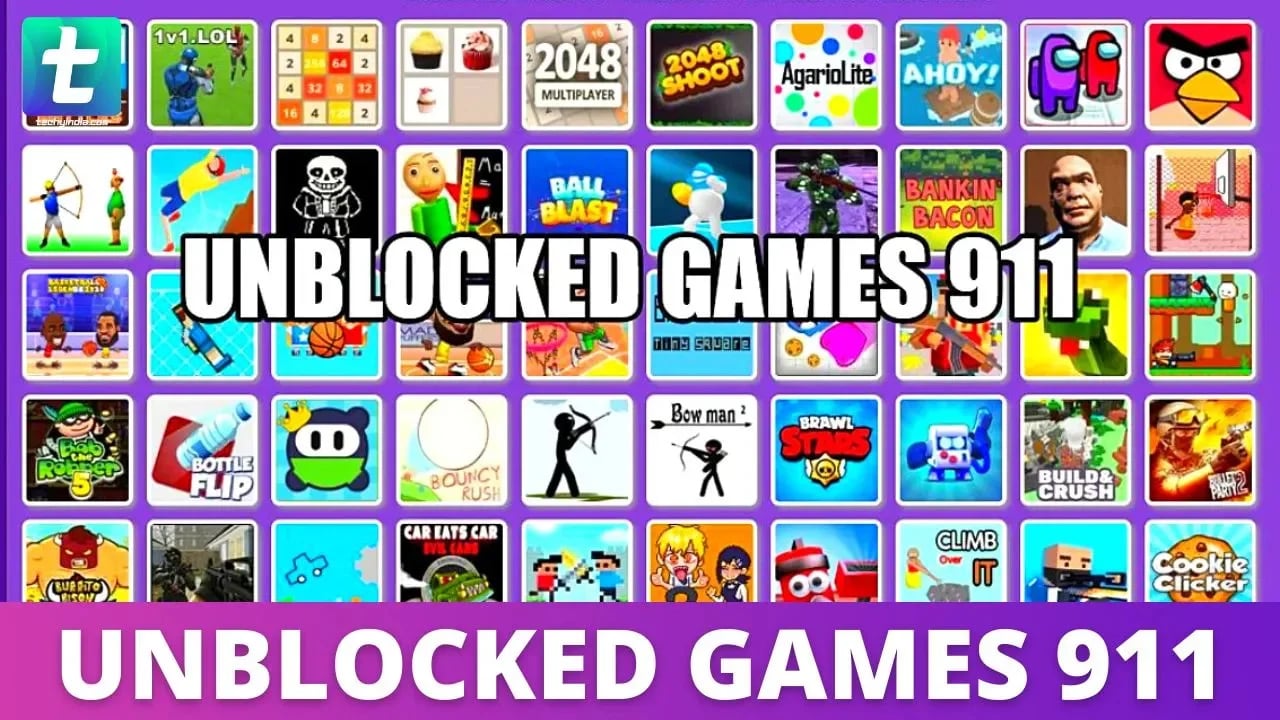Understanding Unblocked 911: What It Is and Why It Matters
The term “unblocked 911” refers to the ability to access emergency services without any restrictions or interferences, ensuring that individuals can reach critical help when faced with urgent situations. This accessibility is not just a technical convenience, but a significant safety measure that can have life-saving implications. In environments such as schools, workplaces, and public areas, access to emergency contact numbers like 911 must be guaranteed to effectively respond to unforeseen incidents.
Challenges to accessing 911 services can arise in various contexts. For instance, schools may implement web filtering systems that accidentally restrict access to critical phone numbers. Similarly, workplaces might have policies in place that inadvertently block employees from making emergency calls. Such barriers can delay response times, putting lives at risk. Understanding unblocked 911 access is essential, as it underscores the need for systems that prioritize safety and responsiveness in emergencies.
Moreover, the implications of restricted access to emergency services extend beyond mere inconvenience; they can lead to dire consequences in situations where every second counts. For instance, individuals may find themselves in perilous circumstances where they cannot contact authorities or first responders, ultimately compromising their safety. Therefore, ensuring that 911 services remain unblocked in all environments is not only a matter of practicality but also an ethical obligation to ensure safety and security among communities.
As we delve deeper into the importance of unblocked 911 access, it becomes clear that enabling free communication with emergency services is critical. This access safeguards individuals in distress and fosters a culture of preparedness and awareness, contributing to a society that takes accountability for protecting its members.
Common Barriers to Accessing 911 Services
Accessing emergency services, specifically the well-known 911 number, can be hindered by several barriers that many individuals do not often consider. One of the primary obstacles is network restrictions that are frequently placed in schools and workplaces. Educational institutions, in an effort to maintain focused environments, often implement stringent internet filters. These measures can inadvertently block access to crucial emergency service websites or applications. In workplaces, similar restrictions are put in place under the guise of productivity, leaving employees vulnerable in times of emergency.
Another significant barrier is the lack of awareness regarding how to access 911 services in unconventional situations. Many individuals are unaware that unblocked 911 services are crucial when they are not connected to traditional landlines. This can be particularly problematic in rural areas or during emergencies in public places where immediate help is vital. A survey revealed that approximately 25% of respondents did not know how to contact emergency services through their mobile phones when they lacked cellular reception.
Furthermore, the technology utilized in certain locations can impede access. For instance, public Wi-Fi networks may block calls to 911, leaving users helpless at critical moments. Moreover, various applications designed to facilitate communication can sometimes malfunction or fail to connect users with emergency services. This technological inconsistency amplifies the urgency of the issue, as individuals might assume they can reach unblocked 911 services via these platforms, only to find themselves unable to do so in the hour of need.
Real-life examples illustrate the gravity of these barriers; instances where individuals have encountered dire situations and faced obstructions while trying to access help underscore the necessity for unblocked 911 services. It is imperative to recognize and address these challenges to ensure that everyone can reach emergency services effectively regardless of their location or circumstances.
How to Ensure Unblocked Access to 911

Access to emergency services like 911 is crucial, yet various situations may lead to restricted connectivity. Ensuring unblocked access to 911 requires attention to both personal device settings and the environments where one may find themselves. Here are some practical strategies to maintain connectivity to these vital services.
First, examine the settings on your personal devices. Most smartphones, including Android and iOS, have built-in features that may inadvertently restrict access to emergency services. Check if your device is operating under a networking mode that prioritizes Wi-Fi calling or has location services disabled. Ensure that “Airplane Mode” is disabled, which could hinder cellular connectivity, thus blocking direct access to 911. Additionally, if your device has data usage restrictions for specific applications or numbers, verify that you include emergency services in the unblocked list.
In environments like workplaces, educational institutions, or public facilities, access to 911 may be restricted due to policies or technological setups. It is advisable to advocate for policy changes that prioritize emergency services. Engaging with management, HR departments, or school administrators to discuss the importance of unblocked 911 services can contribute to more favorable policies that ensure safety for all. Awareness programs can also educate peers about the necessity of maintaining access to emergency contacts.
Alternatives must be explored in environments where traditional phone lines may be unavailable or obstructed. Utilizing internet-based services, like VoIP and messaging applications that support calls to 911, may provide a workaround, especially in cases of network restrictions. Furthermore, leveraging technology, such as personal safety apps, can provide direct access to emergency services and share location data, ensuring timely responses. Understanding these methods is essential for maintaining unblocked access to 911, allowing individuals to act swiftly in emergencies.
The Future of Emergency Access: Innovations and Trends
As the digital landscape continues to evolve, so too does the need for reliable access to emergency services. Innovations in technology are at the forefront of improving the availability and efficiency of unblocked 911 services. A significant trend is the incorporation of location-based services, which allow emergency responders to pinpoint a caller’s location with greater accuracy. This advancement is particularly crucial in urban areas where high-rise buildings and narrow streets can complicate response efforts.
Mobile applications tailored for emergencies are also gaining traction, providing users with tools that facilitate faster communication with 911 operators. These apps may feature options such as GPS tracking, audio/video capabilities, and quick-dial functions. By offering streamlined connectivity, these technologies serve to reduce response times and enhance the effectiveness of emergency interventions.
Moreover, the integration of artificial intelligence (AI) in emergency response systems represents a transformative development. AI can analyze incoming call data to determine the urgency of the situation or even assess the emotional state of the caller. This predictive capability allows emergency services to prioritize calls based on actual needs, ensuring that critical situations are addressed swiftly.
Looking towards the future, we can anticipate additional improvements that may solidify the concept of unblocked 911 access. The expansion of 5G technology is expected to bolster the speed and reliability of data transmission, enabling real-time communication during emergencies. Furthermore, as smart cities become more prevalent, interconnected devices may work collaboratively to alert emergency services automatically, providing them with vital information well before they arrive at the scene.
In summary, the ongoing advancements in technology and communication systems are poised to revolutionize the accessibility and effectiveness of emergency services. By embracing these innovations, we hope to create a world where unblocked 911 services are universally available, enhancing public safety for everyone.

